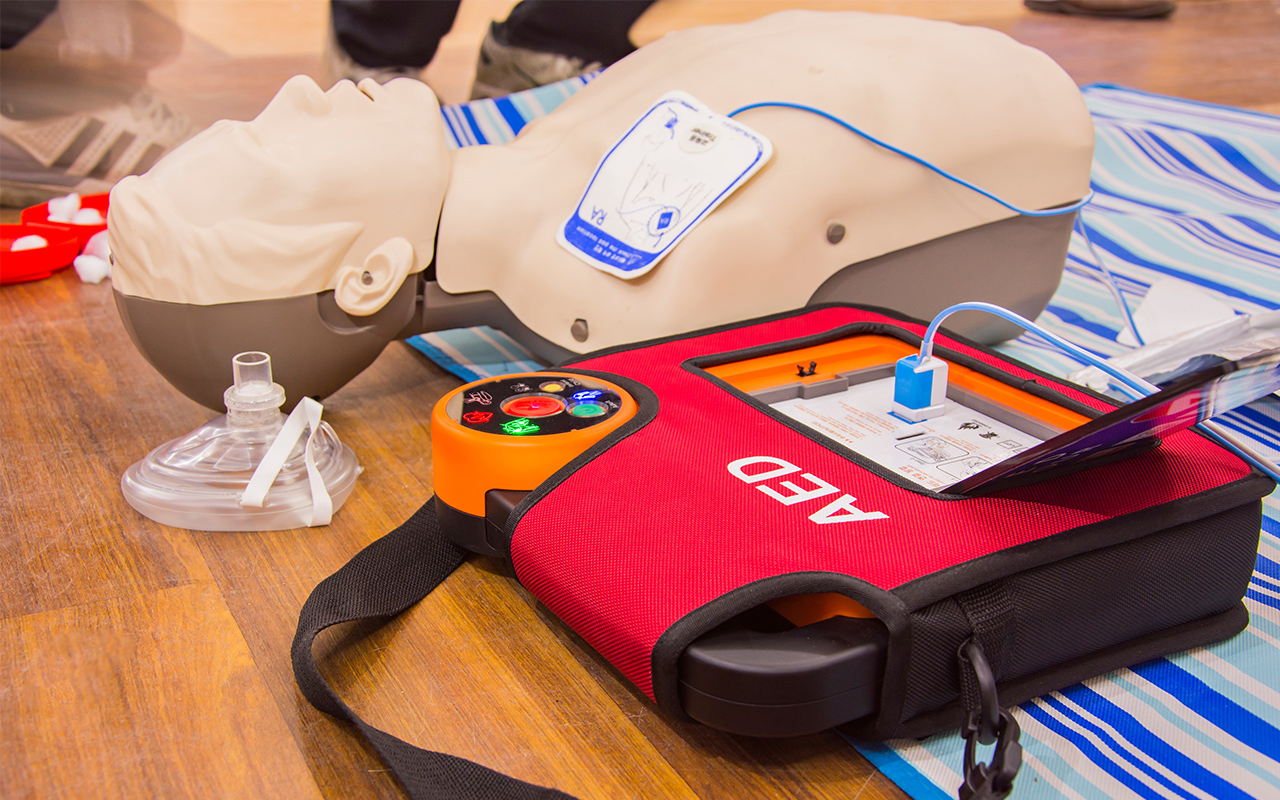What Every Parent Needs to Know
Saving Lives: The Critical Role of AEDs in Sudden Cardiac Arrest Situations
Sudden cardiac arrest (SCA) is a medical emergency that can affect anyone, irrespective of age or health status. Immediate intervention is essential for increasing the chances of survival. One of the most effective tools in addressing SCA is the Automated External Defibrillator (AED), which delivers an electric shock to the heart to restore its normal rhythm. In this blog article, we will explore the importance of AEDs in sudden cardiac arrest situations and how early defibrillation and CPR can significantly increase survival rates. We will also discuss ways to raise awareness about AEDs and their crucial role in saving lives, including a reference to the life-saving efforts of Cristian’s Big Heart [Insert link: “What is an AED? The role of defibrillation during sudden cardiac arrest”].
What are the signs of sudden cardiac arrest?
Sudden cardiac arrest is a life-threatening condition and has few warning signs. It is a type of cardiopulmonary arrest caused by an electrical malfunction in the heart. As its name suggests, sudden cardiac arrest can occur without prior symptoms. Common signs include loss of consciousness or responsiveness, gasping for air, chest pain, and rapid and arrhythmic heartbeat. More Signs of sudden cardiac arrest include unresponsiveness, difficulty breathing, and no pulse. As key differences exist, it is essential to differentiate between cardiac arrest and a heart attack. Cardiac arrest typically occurs when an electrical irregularity in the heart causes it to stop beating suddenly. In contrast, a heart attack is caused by a lack of blood flow due to clogged arteries blocking oxygen-rich blood from reaching the heart muscle. Regardless of the cause, AEDs can help restore normal rhythm and significantly increase the chance of survival if used early during cardiac arrest.
Who is at risk for sudden cardiac arrest?
Sudden cardiac arrest is a frightening medical condition that can affect anyone, regardless of age or fitness level. The most common cause of cardiac arrest is arrhythmia, an issue with the heart’s rhythm, which a number of factors can cause. People at higher risk include those with known underlying issues and certain conditions such as coronary disease and cardiomyopathy or thickening of the heart walls.
Teens are also vulnerable to certain types of sudden cardiac arrests due to issues like long QT syndrome or Wolff-Parkinson-White syndrome. In these cases, death from cardiopulmonary arrest can be swift, so any potentially affected individuals need to receive accurate testing in order to identify any risks before an incident occurs. Family history, obesity, drug use, and smoking are other factors that can contribute to a higher risk of experiencing sudden cardiac arrest.
How to prevent sudden cardiac arrest
Sudden cardiac arrest can be a potentially fatal event, but there are some preventative measures that can improve your chances of surviving it. One of the most effective methods is defibrillation of the heart by using an AED (Automated External Defibrillator). AEDs quickly analyze and detect the condition of the heart before delivering a defibrillating current to restore normal heart rhythm. This technology has saved countless lives, making it an incredibly effective tool for preventing sudden cardiac arrest.
Moreover, regular medical checkups, heart screenings, and lifestyle modifications such as reducing stress, eating healthy, and exercising regularly contribute significantly to avoiding this syndrome. Though these steps alone cannot guarantee complete immunity from sudden cardiac arrest, they remain our best bet at prevention. It’s also essential to be aware of the symptoms and signs of cardiac arrest, as recognizing them early can help ensure timely intervention and increase the chances of survival.
What is an AED, and what does it do?
An AED (Automated External Defibrillator) is a device used in emergencies that delivers a shock to a patient suffering from cardiac arrest to restore their normal heart rhythm. AEDs are lightweight and portable and can be easily operated by anyone in a very short amount of time. They are designed with LED instructions that guide the user step-by-step, making them a great, easy-to-use tool when faced with an emergency.
AEDs are very reliable and can help save a life when used quickly since they reduce the likelihood of a fatal heart rhythm. With their technology constantly improving, they have been proven to help increase survival rates by restoring the normal function of a patient’s heart in a matter of minutes.
Read more about what an AED is in our helpful article https://www.cristiansbigheart.org/what-is-an-aed-the-role-of-defibrillation-during-sudden-cardiac-arrest/

CRISTIAN'S BIG HEART 2020 RECAP
We are absolutely overwhelmed by all your support for Cristian’s Big Heart 2020 Virtual 5k....

THANK YOU TO OUR 2021 TITLE SPONSOR
Special thanks to Scott Dudley Stirling Financial and their awesome team on becoming this years title sponsor.

What Is an AED? the role of defibrillation during sudden cardiac arrest
For those who work in the medical field or maybe a witness to an individual experiencing sudden cardiac arrest...
